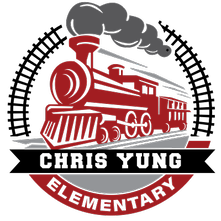We are excited to announce that in the 2024-25 school year, Spanish immersion will be at Chris Yung for Kindergarten learners!
What Is Dual Language Immersion?
Dual Language Immersion is a program where students study academic content in two languages. Students work on the four domains of language learning (reading, writing, listening, and speaking) in both languages throughout each year in the program.
Goals Of Dual Language Immersion
According to the Center for Applied Linguistics, the long-term goals of dual language education programs (often referred to as the three pillars) are:
Goal 1: Bilingualism And Biliteracy
- Students can speak and understand each of the two program languages
- Students can also read, write, translate, and use each of the two program languages to support the continued growth of the other
Goal 2: High Academic Achievement
- Students can achieve grade level expectations in core content areas in both program languages
Goal 3: Sociocultural Competence
- Everyone working to ensure the understanding and advocating for the culturally, linguistically, and socioeconomic diverse needs of all
- Sociocultural competence also includes the use of multiethnic curriculum resources and valuing families' home languages and dialects
PWCS' Dual Language Immersion Model
All PWCS Dual Language Immersion sites will be using an 80%/20% model, which means students kindergarten students enrolled in the program will receive 80% of their core instruction in the target language, while 20% is taught in English. This helps to build a strong foundation in that target language and sets students up for success in later years. As students progress through the program, each year, the amount of English instruction increases until it is 50%/50% in 3rd through 5th grade.
| Grade | Percentage of Instruction in Spanish | Percentage of Instruction in English |
|---|---|---|
| Kindergarten | 80% | 20% |
| First | 70% | 30% |
| Second | 60% | 40% |
| Third-Fifth | 50% | 50% |
Benefits Of Dual Language Immersion
Some of the benefits of a dual language immersion education are, but not limited to:
- Students who are exposed to two languages at an early age, on average, outperform their monolingual peers in traditional classrooms – particularly in reading.
- Heightened sense of social understanding and cultural awareness
- Beneficial for English-learning students since it encourages the development of English, but not at the cost of losing their native language
- The ability to learn additional languages more easily
- Minimizing the achievement gap between English learners and native English speakers that often arises in traditional classrooms
- Improved memory, as well as higher problem-solving skills and executive function
How to Enroll
All parents/guardians who enroll their student for kindergarten at one of the four schools that offer dual language immersion will automatically be entered for a chance to be randomly selected for the program (unless the family opts out). Families will be notified in the summer if their student is selected. Since these are not specialty programs, families must live in the neighborhood boundary of the school – transferring is not an option.
To find more information visit the PWCS Dual Immersion Program website here .
